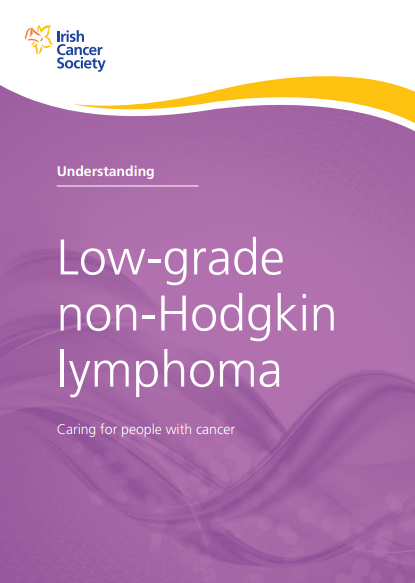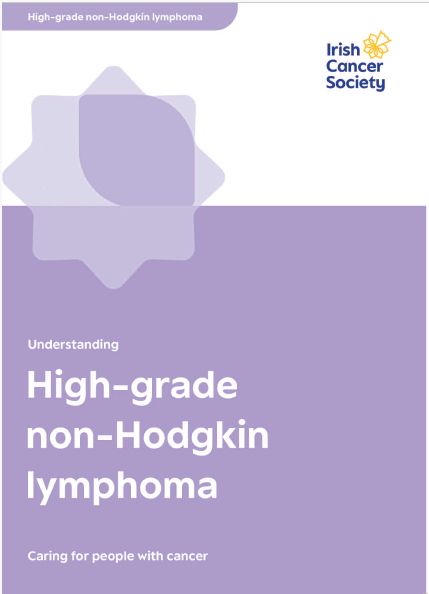Types of non-Hodgkin lymphoma
There are a number of different types of non-Hodgkin lymphoma.
T-cell, B-cell and NK-cell lymphomas
Lymphomas develop from white blood cells called lymphocytes. Lymphomas can be described by the type of lymphocyte white blood cells that are affected:
B-cell lymphocyte white blood cells are affected. B-cells are made in your bone marrow and make antibodies to fight infection.
T-cell lymphocytes are affected. T-cells are made in your thymus gland behind your breastbone and help your immune system fight infection and disease in other ways. T-cell lymphomas are rare.
Natural killer (NK) cells are affected. NK cells are mainly made in the bone marrow, but they mature in lymph nodes and other parts of the body. They release chemicals that can kill harmful cells in their early stage of develop ment, such as viruses and cancer cells. This prevents these cells from spreading. NK-cell lymphomas are rare.
Low-grade and high-grade lymphomas
Low grade and high grade describe how quickly the lymphoma is growing, based on how the cells look under the microscope.
Low-grade non-Hodgkin lymphoma (NHL) refers to a range of different slow-growing lymphomas. They may need little or no treatment for months or even years. The speed of their growth might change over time and there may be times when the disease is more active. After treatment, low-grade lymphomas usually get smaller or even disappear altogether. Some types of low-grade lymphoma can be completely controlled with treatment. If they do return, they can be treated again.
High-grade non-Hodgkin lymphoma (NHL) refers to a range of different fast-growing lymphomas. They usually cause symptoms and will need treatment straight away. It is possible to cure most of them (complete remission).
Subtypes
There are many different subtypes of non-Hodgkin lymphoma. See our booklets Understanding low-grade non-Hodgkin lymphoma and Understanding high-grade non-Hodgkin lymphoma for more details about the most common ones or call our Support Line on 1800 200 700.
Transformation
Lymphoma cells can change gradually over time. In a small number of cases, slow growing (low-grade) lymphomas can change into faster-growing (high-grade) lymphomas. This is called transformation. Transformation is more common in B-cell lymphomas, however most low-grade lymphomas do not transform. If any part of your lymphoma has transformed, you will be treated as having high-grade lymphoma.
Talk to a Cancer Nurse

Support Line
Our Daffodil Centres



